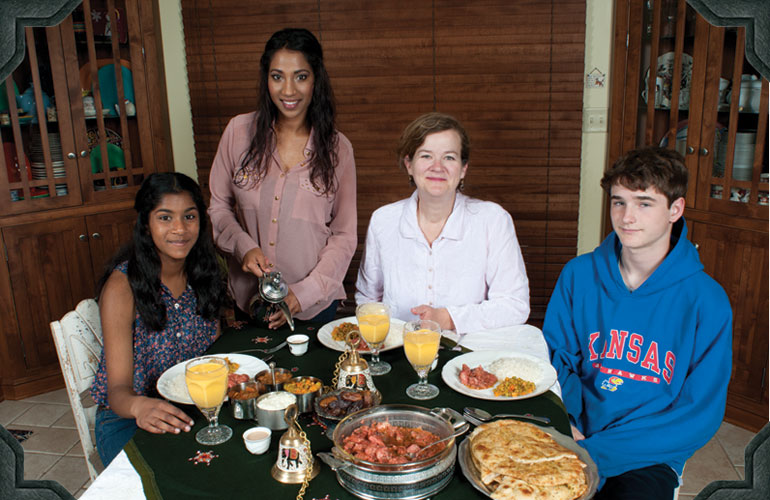I had a college professor with strong opinions about how we, as future teachers, should approach multiculturalism, bemoaning teachers who reduced ethnic studies to “construction paper crafts and plates of ethnic food.” She believed that we should use the time to acknowledge and confront racism. I carried this message into my classroom, sniffing at other teachers when their students made Chinese dragons or dream catchers. I held on to these ideas into motherhood, even after adopting two daughters from India, and remained hyper-aware of any activities that might be construed as trivializing their birth culture. But if there is one thing I’ve learned since becoming a parent, it’s that things are never as straightforward as they seem. While a meal may appear trite at one level, it may also be filled with lessons about identity, culture, and family.
My family began cooking Indian food by necessity. My older daughter, Amla, was seven when we brought her home, and she had already developed her “rice and spice” palate. Her adjustment to American kid cuisine was difficult, so the first summer she was in the States we ate a lot of mangos and bought many cans of dal. There was nothing elaborate about the meal preparation — it was more about providing foods that wouldn’t be so hard on her digestive system.
I had no idea what I would touch off when, on a whim, I bought an Indian cookbook for Amla when she was 10. She pored over the pictures of the platters of “sweet meats” and spices. Seeing her enthusiasm I told her we should make one of the dishes. This simple gesture opened up a new world for us, not just with respect to the different flavors and textures at our table, but because of what cooking these dishes taught us about mealtime.
Food is fuel. It nourishes us and, quite literally, forms us as individuals. Meals, however, are ritualistic and hold meaning. When we sit down with others we are saying something about ourselves and those who share our table. We are saying we are a community — a family.
After that first meal of butter chicken, we went on an Indian-food frenzy: gulab jamun, tikka masala, spicy eggplant, chole chaat, kormas, lassis, samosas. We all learned a lot. For example, we learned that there is no such thing as “curry” in India — it’s actually a combination of a lot of different spices. We learned that the smell of garam masala (another mixture of spices) is about the most luscious scent in the entire world. We learned that if you keep ginger in the freezer, it will last forever. And we learned that the cheapest ghee in town can be purchased at the gas station on Iowa Street. But the most important thing we learned is that food tastes better when it is shared. And so we do, every chance we get, with extended family, friends, and neighbors.
Amla is now a freshman in college. For her first writing assignment, she was asked to write an old-fashioned “what I did on my summer vacation” essay. Because we spent nearly three weeks in India last summer, Amla had plenty of material. Surprisingly, however, her paper didn’t mention visiting the Taj Mahal, seeing three Bengal tigers in the wild, or even returning to her orphanage. Instead, Amla focused on what the trip taught her about herself and how strange it was to return to her homeland and not feel Indian anymore. She wrote that her only true connection to Indian culture was through food, and how ironic it was that she only learned to cook and appreciate Indian food from her American mother.
After reading her essay, I thought about my college professor, the one with the strong ideas about multiculturalism, and how much she could learn from my daughter. Not just about how to prepare an authentic Indian meal, but about what a “trivial” plate of food can teach us about ourselves and our family.



